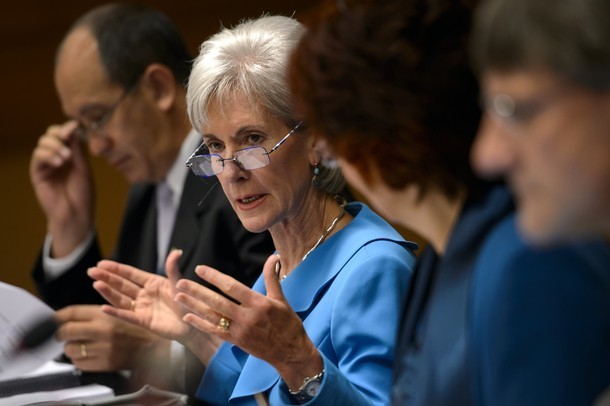We’ve seen a torrent of news from HHS over the past few days, particularly on the question of whether affordability would be determined by the price for individual coverage or for family coverage. This was a critical question because of a glitch in Obamacare which we’ve covered before. Essentially, the government had to choose how the affordability of a premium was calculated – whether it would be based on the price for an individual (cheaper, but covers fewer people) or for a family (far more expensive, but covers more people).
Those who want the law to achieve “universal” coverage were hoping for the family option to win out, but the IRS ruled otherwise:
The Internal Revenue Service says its hands were tied by the way Congress wrote PPACA. Officials said the administration tried to mitigate the impact. Families that can’t get coverage because of the glitch will not face a tax penalty for remaining uninsured, the IRS rules said. “This is a very significant problem, and we have urged that it be fixed,” said Ron Pollack, executive director of Families USA, an advocacy group that supported the overhaul from its early days. “It is clear that the only way this can be fixed is through legislation and not the regulatory process.”
The issue was resolved in a way not many supporters of the law like, and it will have consequences:
“But the rule defines the standard for affordability more narrowly than most consumer groups had hoped — as an amount less than 9.5 percent of household income to cover just that employee’s share of premium costs, not on what he or she must pay to cover their entire family, which is generally more expensive. Consumer groups had hoped to sway the IRS to base the affordability threshold on the cost of a family plan, saying the rules could prevent some children and spouses from getting coverage. A July report from the U.S. Government Accountability Office estimated that a small percentage of uninsured children — 6.6 percent of the total, or at least 460,000 — may be shut out because of how the government proposed to define affordable coverage.”
The coverage expansion, lauded as the major achievement of the law, continues to shrink. And it’s going to shrink even further considering the individual mandate is getting softer all the time:
“HHS clarified that the mandate doesn’t apply to people who are eligible for Medicaid but live in states that don’t take part in the law’s Medicaid expansion. That carve-out gained new importance after last year’s Supreme Court ruling on the health law, which made the Medicaid expansion optional. Until then, lawmakers had assumed that every state would take part in the expansion.”
So if you’re one of the millions of people in that gap, you aren’t subject to the mandate.
“HHS also clarified an exemption for people whose incomes change over the course of a year… HHS clarified Wednesday that the mandate won’t kick in retroactively for people who turn down coverage at the beginning of the year because it was deemed unaffordable, but then end the year having made enough money that coverage would have been affordable, after all.”
These exceptions will continue to make the individual mandate more toothless and less likely to work. Oh, did I say individual mandate? I meant “shared responsibility” payments:
“The mandate requires most taxpayers to either buy insurance or pay a fine to the IRS. It’s one of the most politically unpopular provisions of the healthcare law, and was at the core of last year’s historic Supreme Court case over the healthcare law. HHS referred to the politically charged provision as a system of “shared responsibility” payments.
The mandate penalty “applies only to the limited group of taxpayers who choose to spend a substantial period of time without coverage despite having ready access to affordable coverage,” HHS said in a fact sheet on the new rules.”
How much shared responsibility can the country bear? We’ll find out soon enough.





